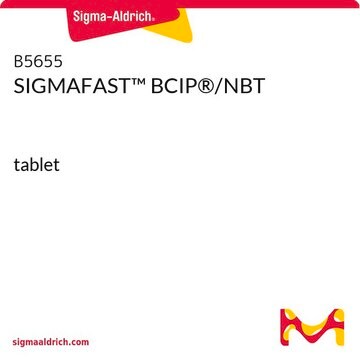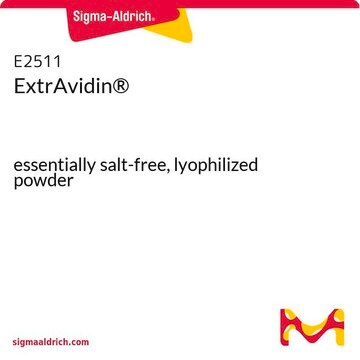E2636
ExtrAvidin® –Alkaline Phosphatase
buffered aqueous solution
Synonym(s):
Alkaline Phosphatase Reagent, ExtrAvidin Alkaline Phosphatase
About This Item
Recommended Products
conjugate
alkaline phosphatase conjugate
Quality Level
form
buffered aqueous solution
technique(s)
dot blot: 1:300,000
immunohistochemistry (formalin-fixed, paraffin-embedded sections): 1:100 using human tissues sections
indirect ELISA: 1:60,000
shipped in
ambient
storage temp.
2-8°C
Looking for similar products? Visit Product Comparison Guide
General description
Application
- Dot blot
- Immunohistochemistry (formalin-fixed, paraffin-embedded sections)
- Indirect ELISA
- Enzyme linked immunosorbent assay (ELISA)
- Enzyme-linked immunosorbent spot (ELISPOT) analysis
- Competitive ELISA
Biochem/physiol Actions
Physical form
Preparation Note
Legal Information
Disclaimer
Storage Class
12 - Non Combustible Liquids
wgk_germany
WGK 2
flash_point_f
Not applicable
flash_point_c
Not applicable
Choose from one of the most recent versions:
Certificates of Analysis (COA)
Don't see the Right Version?
If you require a particular version, you can look up a specific certificate by the Lot or Batch number.
Already Own This Product?
Find documentation for the products that you have recently purchased in the Document Library.
Customers Also Viewed
Articles
ELISpot assay provides qualitative and quantitative information on immune responses, visualizing multiple secretory products from single responding cells.
Protocols
Use this protocol to for the entire immunohistochemistry (IHC) procedure through staining and visualization of specific antigens in paraffin-embedded tissue sections.
Our team of scientists has experience in all areas of research including Life Science, Material Science, Chemical Synthesis, Chromatography, Analytical and many others.
Contact Technical Service












